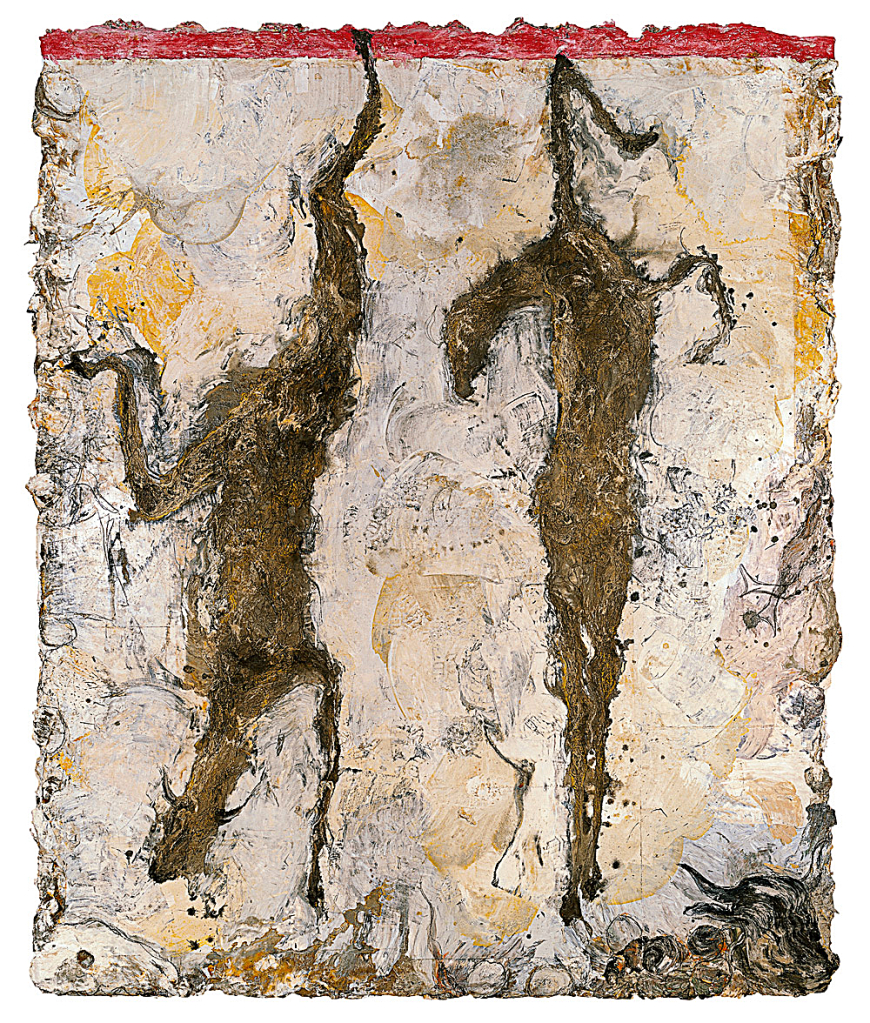Flood
1990Mixed media on canvas230 x 287.7 x 4 cm
Miquel Barceló was one of the foremost representatives of Spanish Neo-Expressionism in the early 1980s, together with painters such as Ferrán García Sevilla, Miguel Ángel Campano, Juan Navarro Baldeweg, and José María Sicilia. This so-called return to painting in Spain occurred after other similar movements had begun in Italy, Germany, Austria, and the United States.
In his years of consolidation, Barceló's work was characterized by large formats and thick layers of materials. Barceló added unusual materials to his paintings, such as marine algae, volcanic ash, foods (flour or rice, for example), and different waste materials, including cardboard boxes and cigarette butts, and he painted his canvases on the floor. In the mid 1980s he began to eliminate narrative elements in his paintings and the principal themes in his work became light, holes, and transparencies. This process of simplification culminated in the white paintings, a prolific series the artist created between 1988, a year in which the traveled across the Sahara from Algeria to Mali (where he acquired a house and studio that he still uses today).
Barceló's Flood (Le Déluge, 1990) is one of a group of three paintings, along with Saison des pluies no. 1 (1990, private collection) and Saison des pluies no. 2 (1990, Museu d'Art Contemporani de Barcelona). The three paintings depict a very similar image, which, although abstract, represents the flow of a river during rainfall. The rain is light in the first painting, becomes more intense in the second, and is a torrential downpour in the last piece, Flood. These paintings mark the end of the artist's series of white paintings created between 1988 and 1990. During this period, in addition to traveling through the Sahara and along the Niger, Barceló also visited glaciers in the Swiss Alps, where he painted ice and snow.
The entire image in Flood is painted in blue and gray tones with white for the furthest tributaries, suggesting water. In the foreground, Barceló painted the splashes produced by raindrops when they hit a surface of water. The diagonal advance of the river and the diagonal inclination of the rain bring dynamic power and velocity to the image; thus, with spare means, the painter captured the force of a rainstorm. The painting offers the same fluid effect as that of earth wet in the rain. In a symbolic way, these rainfall images put an end to the artist's numerous desert landscapes.
Rain comes in through the window and covers the entire painting, ironically imitating the all-over structure of some Abstract Expressionist paintings and subverting the traditional dichotomy between figure and ground. Here, Barceló also wanted to reflect on the liquid nature of paint and the possibility of using it metaphorically to capture time.
Original title
Le Déluge
Date
1990
Medium/Materials
Mixed media on canvas
Dimensions
230 x 287.7 x 4 cm
Credit line
Guggenheim Bilbao Museoa






